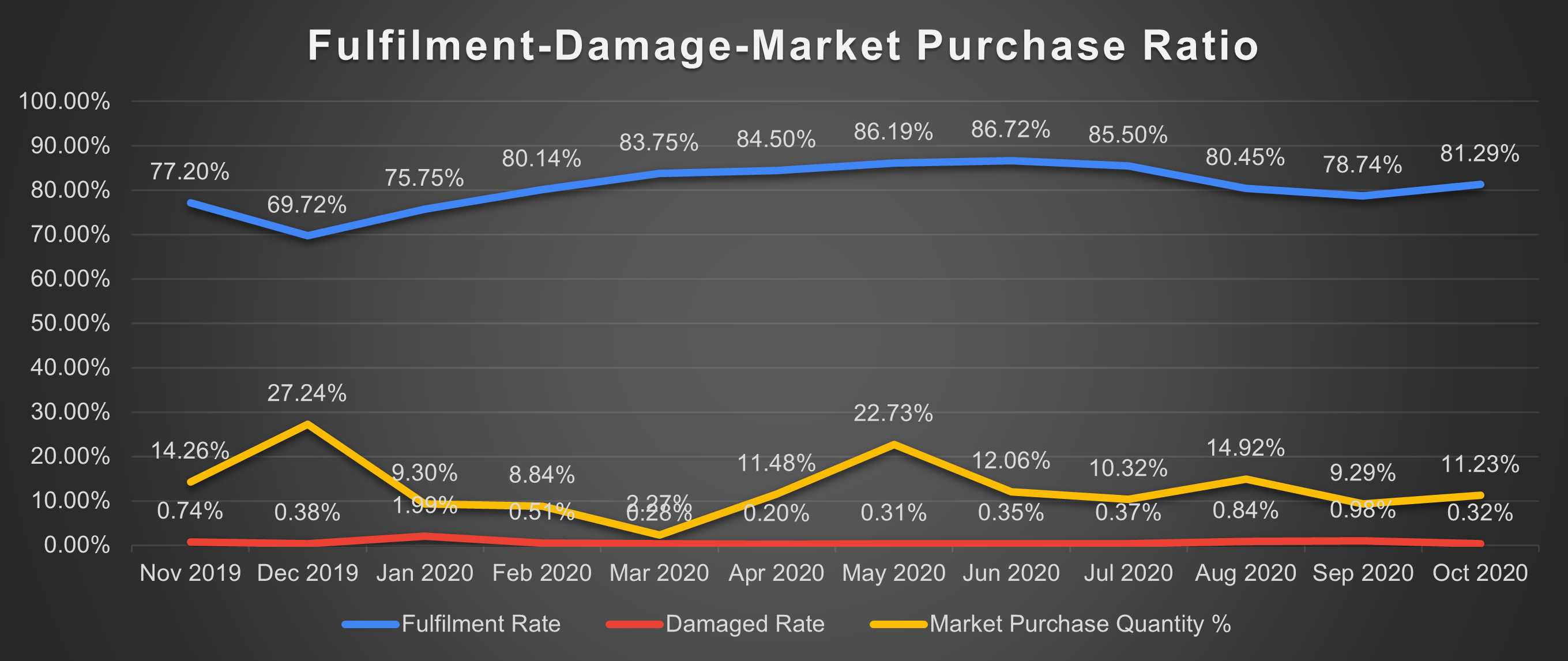Sourcing-and-Fulfillment-Effectiveness
Introduction
This report reviews my previous company’s monthly procurement and fulfillment performance from November 2019 to October 2020, focusing on several key areas, including the quantities requested and received, fulfillment rates, damaged quantities, cost price adjustments, and market purchases. The insights gained from this analysis will provide valuable guidance for improving supply chain management and enhancing operational efficiency.
Key Metrics Analysis
Total Requested and Received Quantities
- Trend: Overall increase in requested and received quantities, with a peak in July 2020.
- Fulfillment Rate:
- Started at 77.20% in November 2019.
- Peaked at 86.72% in June 2020.
- Minor fluctuations in August and September, indicating potential supply chain challenges.
- Takeaway: Generally positive trend, but areas for improvement in consistency.
Fulfillment Rate
- Improvement over Time: Fulfillment rate increased significantly from late 2019 to mid-2020.
- Notable Drops: Minor dips in August and September suggest temporary disruptions.
- Implication: Indicates improved logistics, but contingency plans may be needed for high-demand periods.
Damaged Quantities and Amounts
- Fluctuations: High damaged quantities and amounts in January, August, and September 2020.
- Damaged Rate Peaks:
- January: 1.99%.
- September: 0.98%.
- Insight: High damage rates may indicate handling or supplier quality issues during certain months.
Cost Price Adjustment Counts
- Products with Increased Cost Price:
- High in August (160 products).
- Products with Decreased Cost Price:
- High in March (157 products).
- Market Factors: Likely influenced by seasonal trends or supplier pricing adjustments.
- Consideration: Monitoring these adjustments aids in budgeting and financial planning.
Market Purchases
- High Market Purchase Percentages: December 2019 (27.24%), May 2020 (22.73%), and August 2020 (14.92%).
- Implication: Indicates reliance on external vendors during certain months.
- Recommendation: Controlling dependency on market purchases can help reduce procurement costs.
Conclusion
The analysis reveals several positive trends, including improved fulfillment rates and controlled damage rates in most months. However, there are areas that require improvement, such as reducing the rates of damaged goods, managing fluctuations in product cost prices, and monitoring the reliance on market purchases. By addressing these issues, This company can enhance its supply chain resilience and operational efficiency.
